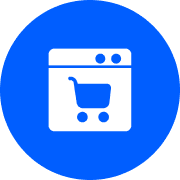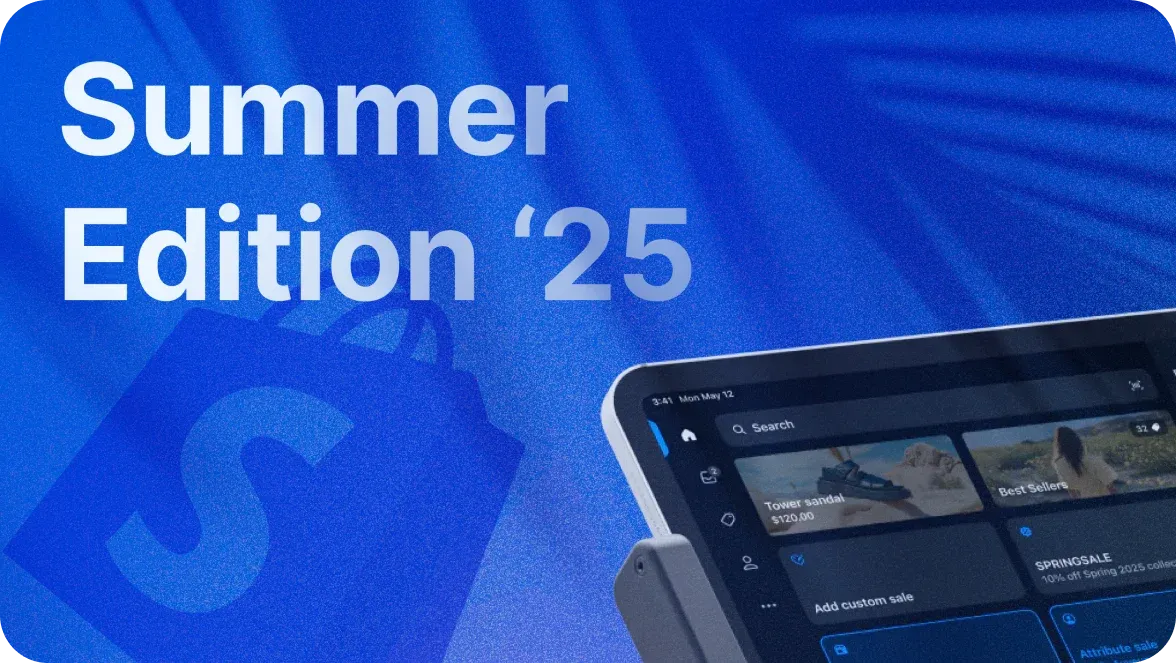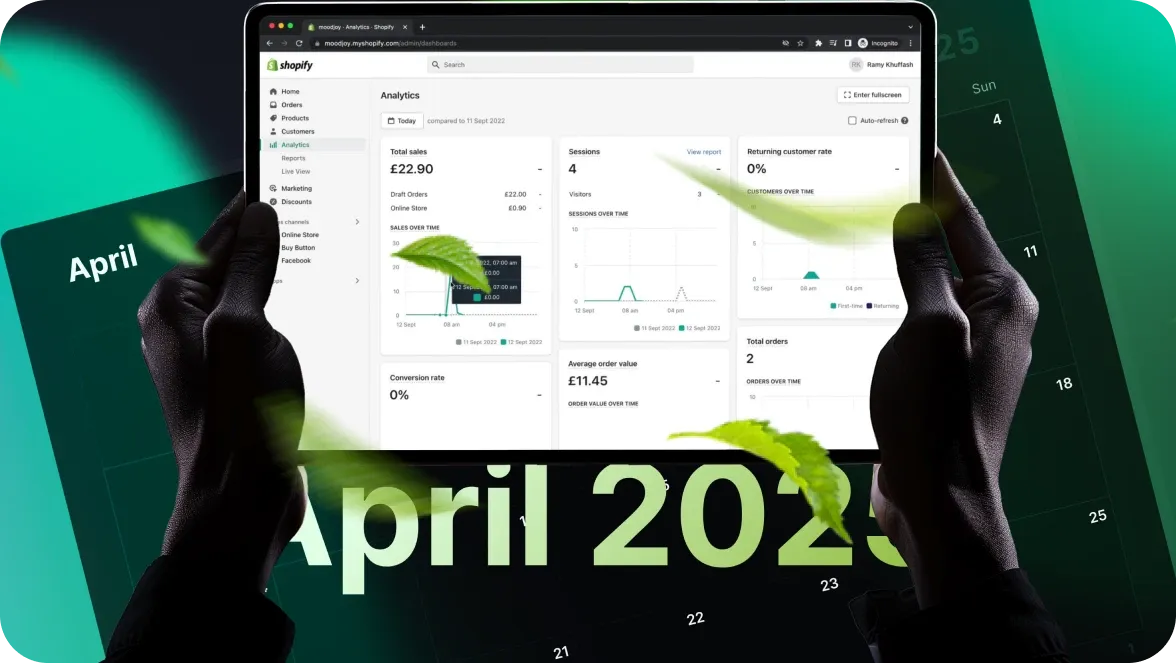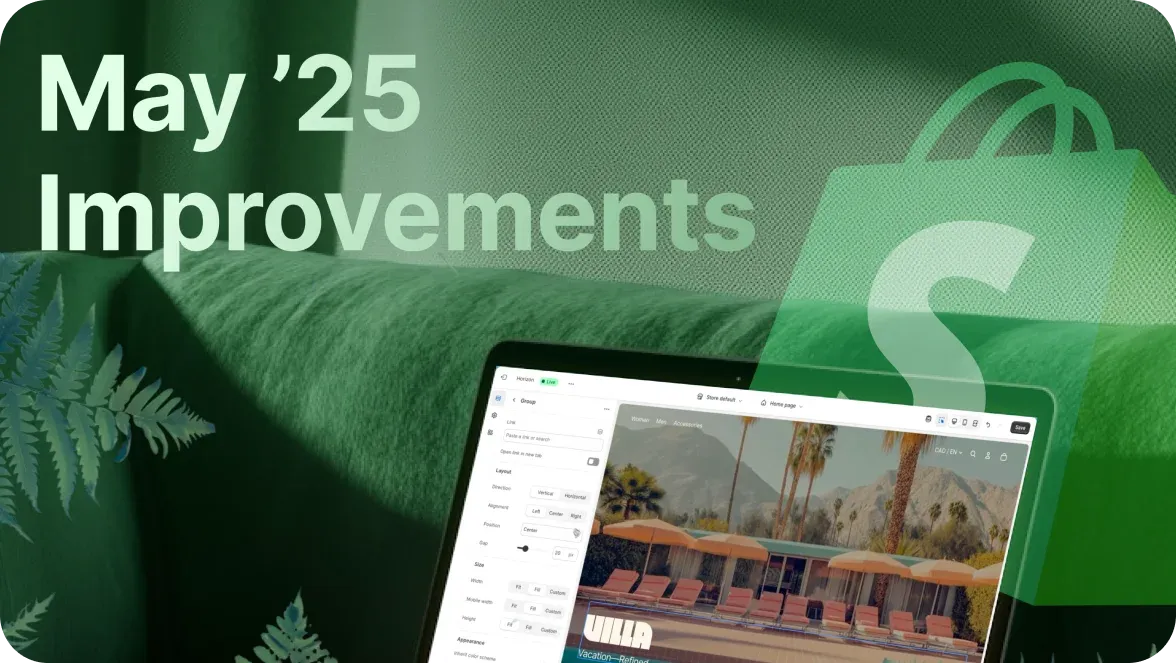
As usual, we present the latest Shopify news to ensure your store functions smoothly and takes advantage of new features as soon as they are launched. August 2025 brought a powerful combination of updates that enable merchants to work smarter, operate more efficiently, and provide enhanced shopping experiences in areas such as payments, pricing, reporting, and more.
We have collected the most significant changes and explained how they can benefit your business.
Shopify updates released in August

Draft orders now have a tag limit
Since August 1, Shopify has put a limit of 250 tags on a draft order. The cap enhances store performance, especially for merchants who use apps that automatically generate tags. Draft orders that already exceed this limit will retain the tags they currently have; however, no additional ones can be added until the number is lower. Tags can be easily handled by merchants on the draft order details page. This update helps stores run faster and reduces the risk of errors when working with draft orders.
Smarter customer eligibility for automatic discounts
Now, automatic discounts can also be directed to individual customers, segments, or everyone who shops. It becomes easier to develop a segmented promotion to VIPs, members of a loyalty program, or to certain groups of customers. You can also add or remove automatic discounts in POS Pro locations, gaining greater control over in-store promotions.
This update allows you to create more customized and strategic campaigns and also ensures that only the target customers receive the discounts.
Edit orders with duties and import taxes
Merchants are now able to edit duties and import taxes on orders. This wasn’t possible before, but now, when you make any modifications to the products in an order, Shopify will recalculate the duties and import taxes of items that have not been fulfilled.
This helps international merchants handle sales across borders with greater efficiency without manual workarounds.
Looking to scale across borders? Discover how Shopify internationalization works with these updates to support your global growth.
Easier arrangement of app blocks in Checkout and Accounts Editor
Shopify has improved the Sections tab in the Checkout and Accounts Editor. The app blocks now look exactly as they will to customers, and you can drag and drop them across the sections. Labels and descriptions are clearer, and on customer accounts, Order Status page app blocks now appear in the Order Summary section.
Flow adopts new GraphQL Admin API versions
Shopify Flow has been upgraded twice this month:
August 8, 2025-04 API adopted, adding new discounts and subscriptions filters, new values on payment methods and reasons to reject, and a defaultEmailAddress field in customers.
August 13, 2025-07 API released, adding quantity tracking and timestamps to returns, new fields on transactions and mutations to add or remove a customer to an order. Such updates offer developers and merchants the flexibility to create more advanced automations and enhance data accuracy.
Faster PayPal Wallet dispute resolution
On August 11, Shopify announced two significant changes to PayPal Wallet disputes: claims covered by PayPal Seller Protection (when tracking is provided) are now resolved much faster, and customers can dispute individual items instead of entire orders. This transformation reduces risk, shortens dispute times, and helps to safeguard merchant revenue.
Customize Analytics dashboard with custom sections
Now, you will be able to add their custom sections to the Analytics dashboard. You may have related metrics grouped together, such as sales vs. marketing, and can rearrange or collapse sections. This provides a more personalized analytics experience, enabling you to track performance in a manner that aligns with your business needs.
Discounts on fulfilled items
Now, discounts can be offered on fulfilled items, not just unfulfilled ones. This enables partial refunds through discounts, allows post-purchase adjustments, and also automates the process of unarchiving/re-archiving of orders when refunds are issued. Merchants save time and get an easier and less rigid refund procedure.
Social sign-in options for customer accounts
Shopify introduced the ability to use Google and Facebook as a sign-in for customer accounts. Setup takes just a few minutes, and customers experience a faster and more trusted login. This enhances conversions, encourages repeat purchases, and streamlines return management while providing shoppers with familiar login options.
Apple Pay is now supported by B2B Checkout
Apple Pay is now available at the checkout point for B2B merchants. In the case of blended stores, Apple Pay will automatically be applied to wholesale orders that have no payment terms. Merchants can also control option availability using Checkout Blocks. This accelerates wholesale checkout in order to enhance customer satisfaction and payment processing.
You can also customize the availability of Apple Pay as a payment option using Checkout Blocks:
Convert analytics into any currency instantly
Since August 15, merchants can see analytics data in any currency with the support of a new currency picker. Conversions use historical exchange rates, ensuring accuracy. This update is particularly useful when comparing performance across regions for multi-currency sellers.
Pickup in-store option for B2B
Pickup in-store is now a delivery method to wholesale buyers. In the case of blended stores, all customers will have access to local pickup, but merchants can control visibility using Checkout Blocks. This gives B2B customers greater delivery flexibility and allows merchants to save on shipping expenses.
Updates to Discounts CSV exports
This month brought two important changes to Discounts CSV exports:
August 17 - New Context column, which indicates whether a discount is applicable to all customers, individual customers, or categories.
August 26 - Updated column of Discount Class, specifying whether a discount applies to order, product, shipping, or a combination of several categories.
These developments offer more discount strategy reporting and analysis. Merchants who use scripts or external applications should review their arrangements to ensure they align with the updates.
Support for Dynamic Product Bundles on POS
On August 18, Shopify introduced bundle support to POS, as well as cartTransform API support, line-item UI extension targets, and split line-item support. This enables developers to create sophisticated bundle logic (e.g., mix-and-match, optional add-ons) with precise inventory tracking and a smooth in-store checkout experience.
| Read the article to learn how to create Shopify bundles and effectively promote them in your store. |
|---|
Retail markets for location-specific pricing
Retailers that have installed POS Pro may now price their products based on location. This allows merchants the opportunity to set prices depending on store location, customer demographics, or performance with a common inventory management system. Retail markets help optimize profitability and align pricing strategies with local conditions.
Refunds to store credit for cancelled orders
On August 19, Shopify also allowed issuing a refund in the form of store credit when an order is cancelled. Merchants can also establish expiration dates. This will ensure that money continues to circulate within the business, increasing customer retention and loyalty.
Translate Shopify Forms into multiple languages
Since August 20, Shopify Forms can be translated automatically or manually into multiple languages. This provides international shoppers with a localized and consistent customer experience.
To learn more about enhancing your store for global audiences, check out DigitalSuits’ Shopify internationalization services.
Automate fraud prevention settings
Shopify Payments recently launched automated fraud settings that are updated according to Shopify recommendations. These are using 400+ fraud indicators for more precise detection. This makes it easier to manage fraud among merchants and minimizes the risk, allowing Shopify models to handle fraud prevention.
New “Bin name” column in Inventory CSV
Shopify introduced a Bin name column to inventory CSVs. Bin names also appear on Pick lists, Bulk Editor, and the Inventory Index page, allowing staff members to browse through warehouses easily. The update simplifies warehouse management and order fulfillment.
Updates to Inventory CSV file columns
Shopify also included an On hand (new) column, and renamed the previous one to On hand (current). This removes the possibility of accidental overwriting of stock information when re-importing CSV files. Merchants using automated workflows should upgrade their configurations to accommodate the change.
Analytics presets now include today’s data
From August 26, Shopify’s Last 7/30/90/365 days presets automatically include today’s performance data. This eliminates the need to use custom ranges and offers real-time insights by default.
Store credit for B2B customers
Shopify introduced store credit for B2B company locations. Merchants can issue credits, set expirations, monitor balances, and enable B2B buyers to redeem credits at checkout. This reinforces the B2B relationships, provides retention, and offers easy refund possibilities.
Canada Post duties-pre-paid for US shipments
Shopify requires all Canada Post shipments to the US to be sent Delivered Duties Paid (DDP). Merchants will need to enable the Shopify duties calculations and set product HS codes and origins. This provides compliance, easy shipping, and an enhanced customer delivery experience.
Storefront API now supports vaulted cards and store credit
Headless storefronts and mobile apps that are built with the Storefront API can now accept vaulted cards and store credit at checkout. This makes payments quicker and safer on custom storefronts and applications.
Announcement bar extensions for post-checkout pages
Shopify also added announcement bar extensions to the Customer Account and Thank You pages. These can be used to highlight surveys, upsells, or reviews with prominent design and animations. This creates new post-sale opportunities and revenue growth.
Extensions should only use the announcement bar as a concise teaser:
Consider using a Modal for long content to ensure it won't be truncated:
Authorize custom crawlers and tools with Web Bot Auth
Authenticate custom crawlers and tools using Web Bot Auth. Shopify now supports Web Bot Auth and HTTP message signature, which you can use to access your public Shopify store for first- or third-party crawlers, scripts, or tools. Perfectly suitable in terms of accessibility checks, SEO audits, automated testing, and data analysis.
Control signatures in the Shopify administration (custom names and expiration dates). Your tool requires you to set Signature-Input, Signature, and Signature-Agent HTTP headers to use a signature.
Partner with DigitalSuits for seamless Shopify growth
If you have encountered any issues implementing these new features or require professional assistance to keep your store running smoothly, contact the DigitalSuits team for immediate help. With over eight years of experience in Shopify web development and Shopify Plus development, our specialists are equipped to lead you through all the stages of the store optimization and upgrading process, delivering reliable solutions tailored to your business needs.



































Was this helpful?
0
No comments yet